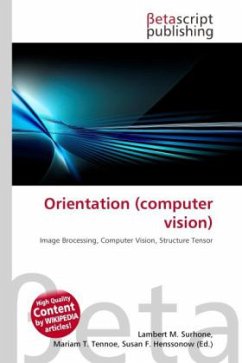High Quality Content by WIKIPEDIA articles! In computer vision and image processing a common assumption is that sufficiently small image regions can be characterized as locally one-dimensional, e.g., in terms of lines or edges. For natural images this assumption is usually correct except at specific points, e.g., corners or line junctions or crossings, or in regions of high frequency textures. However, what size the regions have to be in order to appear as one-dimensional varies both between images and within an image. Also, in practice a local region is never exactly one-dimensional but can be so to a sufficient degree of approximation.
Bitte wählen Sie Ihr Anliegen aus.
Rechnungen
Retourenschein anfordern
Bestellstatus
Storno








